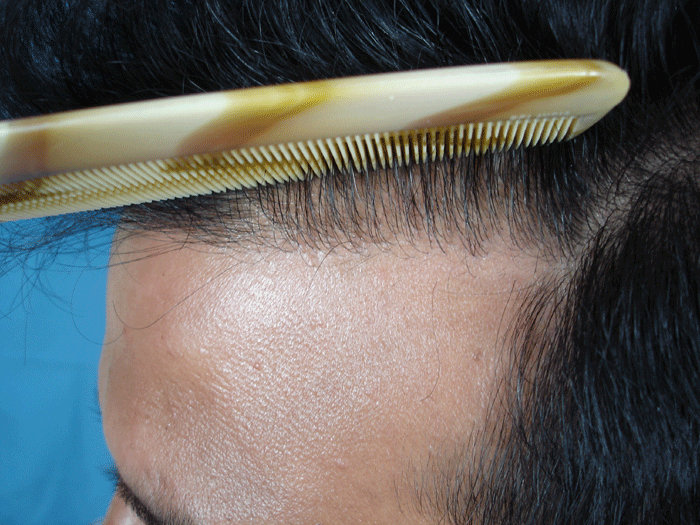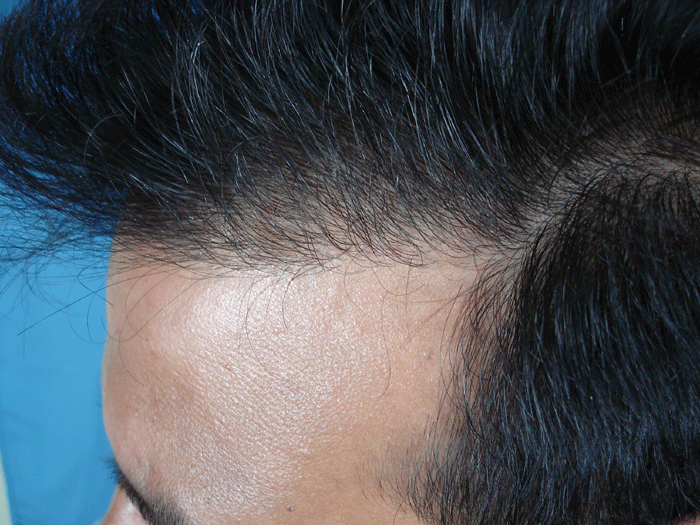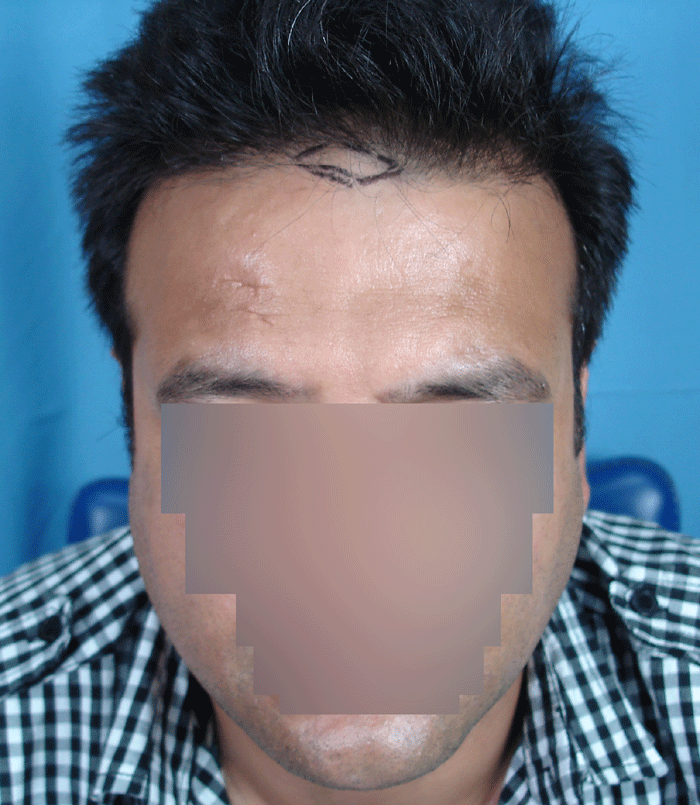??Mr. Arvind??
I know Dr. Arvind is a humble person, but your sentence starting with Mr. and including ‘respectfully’, does not really match.
As for miniaturization, what makes you feel that our clinic and doctors do not know about this basic concept? It has been in published literature since ages and nothing new.
We always check for the miniaturization and use this concept to go into the thinning and miniaturizing hair while transplanting.
However, your claims that you can see miniaturization that makes you sure that this patient will go to a Norwood 6 or 7 makes me curious as to what you base your statement on!
» Hi Mr. Arvind, good transplant work but I respectfully disagree with your
» following comment:
»
» » No amount of testing can accurately tell how much more hairloss the
» » patient will have and over what time span.
»
» As you well know thinning isn’t detected by most people until 50% of the
» hair is gone or significantly miniturized. This is why mapping for
» miniturization is so crucial, b/c it outlines the likely future pattern of
» hair loss. This, combined with the Norwood pattern of other family members,
» provides an accurate way of predicting future hair loss.
»
» BTW, here’s more info on miniturization:
» »
» So did you map this patient for miniturization? B/c it looks like he will
» easily end up a Norwood 5/7… I mean, a Norwood 5 at the least, but of
» course we can’t tell with the naked eye actual miniturization so he could
» wind up a Norwood 7. For his sake I hope he’s a Norwood 5, esp given the
» density of his new hairline.
»
» All the best,
» BB
This continued hairloss over rest of ones life is what dissuades me from advising hair transplants to the less affluent patients. Suppose, they lose hair but do not have the spare finances to get more and more transplants. Not everyone is a millionaire.
» As you well know thinning isn’t detected by most people until 50% of the
» hair is gone or significantly miniturized. This is why mapping for
» miniturization is so crucial, b/c it outlines the likely future pattern of
» hair loss. This, combined with the Norwood pattern of other family members,
» provides an accurate way of predicting future hair loss.
»
I hope you do not believe this. To combine the miniaturization with family history of hairloss is NOT AN ACCURATE way of predicting future hair loss. Statements like these are what lead many youngsters to hairtransplants thinking that they will not lose more hair because no one in the family has lost hair.
I know of examples where none of the relatives had any hairloss.
The person had no miniaturiazation in his 30s and he still ended up a norwood 6.
Dear readers,
This is the case of another patient who got 160 chest hair grafts transplanted in the hairline.
As techniques evolve the approaches to treating hairloss patients will have to adapt accordingly.
Details of his first bht are available at the link below.
http://www.hairsite4.com/dc/dcboard.php?az=show_topic&forum=12&topic_id=52815&mode=full&page=2
Patient details -
Age 36 years.
No family history of hairloss in both sides of the family tree.
Patient nickname - for ease of reference - MM
The patient is happy with the growth of bht from his previous procedure and has gone for 256 more chest and abdomen hair grafts recently.
Pictures follow.
Pictures of the previous hair growth
Pictures of the proposed recipient areas that need to be addressed this time.
Picture of body hair grafts
Pictures of the graft placement in 2nd bht.
Hello,
To address you points/questions:
-
Titles: I have a PhD from a prestigious university, and I work with people with MDs and PhDs. I refer everybody by Mr/Ms unless they correct me, and whenever anyone calls me “doctor” or a similar academic title (which happens far too frequently) then I tell them to stop. It’s just a personal value preference (I really frown upon socially-constructed hierarchies) and has nothing to with Doctor Arvind or his practice.
-
Miniturization: I provide the link on miniturization for other people since this is a public forum. I most certainly assume trained hair transplant surgeons and technicians are aware of the pathogenesis of androgenetic alopecia.
-
Pattern of miniturization: as you know, the full extent of hair loss is not always evident until you carefully examine hair miniturization (via densitometer). Of course this doesn’t mean hair loss will stop at the evident pattern of miniturization, but at least you know how extensive it can be. And so I’m still wondering what the pattern of miniturization is on this young man.
Anyway, I did not intend to create confusion. Again, I think Doctor Arvind did a good job on restoring this young man’s hairline.
All the best,
BB
» ??Mr. Arvind??
» I know Dr. Arvind is a humble person, but your sentence starting with Mr.
» and including ‘respectfully’, does not really match.
»
» As for miniaturization, what makes you feel that our clinic and doctors do
» not know about this basic concept? It has been in published literature
» since ages and nothing new.
» We always check for the miniaturization and use this concept to go into
» the thinning and miniaturizing hair while transplanting.
»
» However, your claims that you can see miniaturization that makes you sure
» that this patient will go to a Norwood 6 or 7 makes me curious as to what
» you base your statement on!
Hello,
I still disagree. Mapping miniturization is especially important because hair loss is not evident until at least 50% or more hairs have fallen out. I have personally found this extremely valuable in assessing my own hair loss. And family history is vital because, although complex, androgenetic alopecia is genetic, as you well know. Of course, just because there is no miniturization and no family history does not mean hair loss will not occur. But I would wager it is much less likely.
However, you and I do agree that it is important to be very, very conservative when it comes to hair transplantation. Just because there is very little hair loss and no family history of hair loss does not justify very low hairlines or thick densities. But that is the point of my original question: was this young man mapped for miniturization and if so what was the extent?
Thank you for taking the time to answer questions in this forum!
Best,
BB
» I hope you do not believe this. To combine the miniaturization with family
» history of hairloss is NOT AN ACCURATE way of predicting future hair loss.
» Statements like these are what lead many youngsters to hairtransplants
» thinking that they will not lose more hair because no one in the family
» has lost hair.
»
» I know of examples where none of the relatives had any hairloss.
» The person had no miniaturiazation in his 30s and he still ended up a
» norwood 6.








